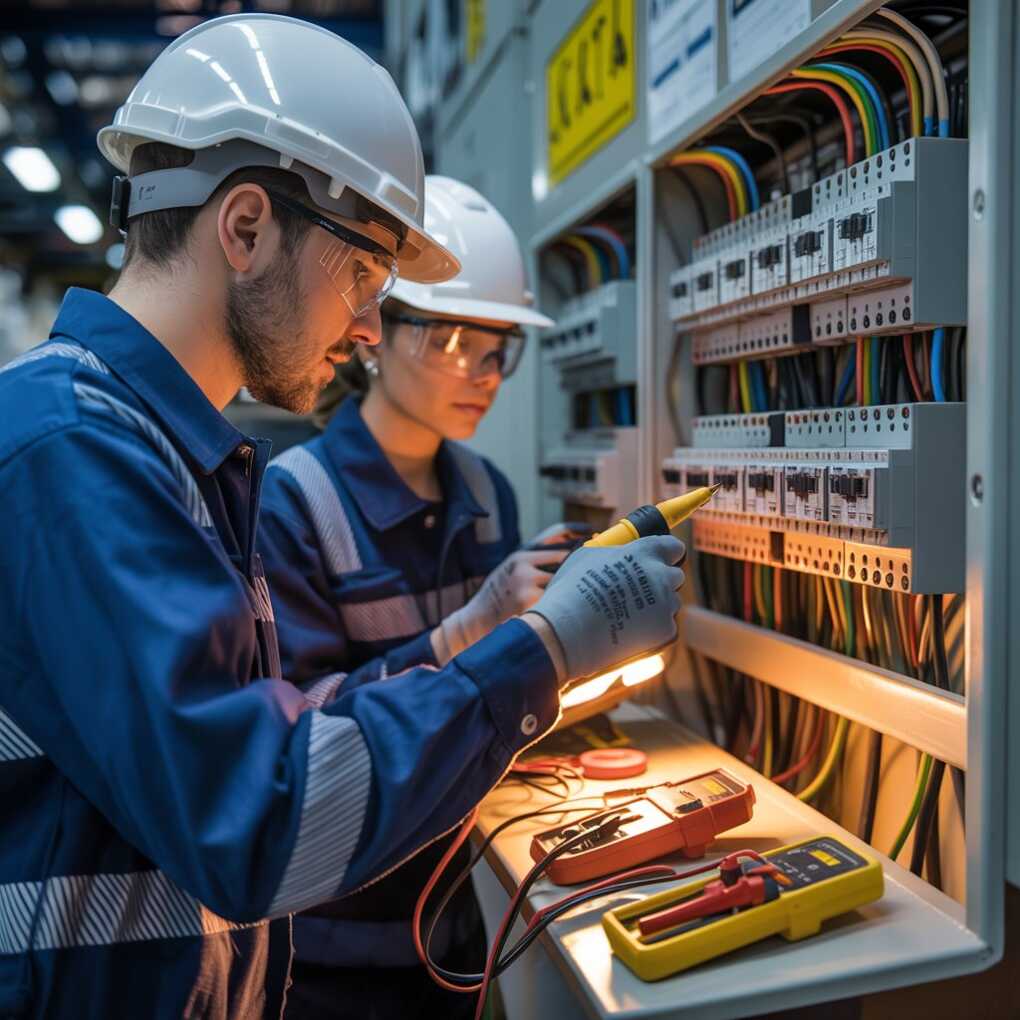Electrical safety in the workplace is not just a regulatory necessity—it’s a foundational pillar of operational stability, employee well-being, and long-term business continuity. One overlooked error or outdated component can lead to equipment failure, fire hazards, or even life-threatening injuries. In commercial settings where machinery, lighting, heating systems, and digital infrastructure are all connected through electrical grids, the role of a qualified commercial electrician becomes critical. Their daily work is not just about maintaining wires and panels—it’s about preventing accidents before they happen. We will explore how commercial electricians contribute to workplace safety by following meticulous procedures, applying in-depth knowledge of electrical systems, and proactively identifying hazards that others may miss.

Key Ways Commercial Electricians Promote Workplace Safety
Regular Inspection and Testing of Electrical Systems
Routine inspections form the backbone of electrical safety in commercial buildings. Commercial electricians see here are responsible for conducting periodic evaluations of the entire electrical infrastructure, from circuit breakers to power outlets. These inspections are not mere checklists—they are thorough investigations designed to catch wear and tear, corrosion, loose connections, and outdated wiring that could pose risks. By using tools such as thermal imaging cameras, voltage testers, and circuit analyzers, electricians can pinpoint areas of concern long before problems escalate. These regular checks also help ensure that the building complies with local electrical codes and safety regulations, avoiding legal liabilities for businesses.
For workplaces operating heavy machinery or sensitive equipment, even minor voltage fluctuations can cause significant disruptions. The timely identification and resolution of such risks through scheduled maintenance can prevent system failures, reduce downtime, and enhance employee safety. These inspections also serve as an educational opportunity for staff, reinforcing awareness about the potential hazards of faulty or exposed wiring.
Installation of Ground Fault Circuit Interrupters (GFCIs) and Surge Protection
One of the more tangible ways commercial electricians enhance workplace safety is through the strategic installation of devices like GFCIs and surge protectors. Ground Fault Circuit Interrupters are critical in areas exposed to moisture, such as kitchens, bathrooms, or outdoor workstations. They work by immediately cutting off power if a current imbalance is detected—essentially stopping a potential electrocution in its tracks. Electricians determine where GFCIs are necessary based on the layout of the facility and local electrical standards.
Surge protectors, on the other hand, shield valuable electronics and machinery from voltage spikes. These surges can occur during lightning storms, power outages, or malfunctions in the utility grid. A commercial electrician doesn’t just plug in a protector—they evaluate the building’s power load, understand the sensitivity of connected equipment, and implement a tailored solution that offers robust defense. These additions play a significant role in protecting both human life and property, ensuring the electrical environment remains stable and hazard-free.
Labeling, Signage, and Clear Circuit Mapping
Communication is a vital component of workplace safety, and commercial electricians ensure that electrical systems are clearly labeled and mapped. When circuit panels are properly marked and electrical lines are identified with visible tags, it minimizes confusion during emergencies. For example, if a short circuit or spark occurs, knowing exactly which breaker to shut off can save precious time and prevent further damage. Commercial electricians often provide laminated maps or panel guides that detail which switch corresponds to which area or equipment.
In industrial environments, electricians also install cautionary signage near high-voltage zones or machinery. These warning labels remind staff to approach certain areas with caution and reinforce safety training provided by employers. Without this level of clarity, even a simple maintenance task could turn into a dangerous situation. Organized labeling and signage are often underestimated, but they are instrumental in ensuring safe navigation of the building’s electrical framework.
Upgrading Outdated Systems to Modern Safety Standards
Many commercial buildings still operate on electrical systems installed decades ago. These older systems may not only be inefficient, but they also pose serious safety risks due to outdated wiring materials, inadequate circuit capacity, or worn-out insulation. Commercial electricians assess these systems and recommend upgrades that align with current safety codes and energy demands. Whether it’s replacing aluminum wiring with copper, installing modern load centers, or rewiring sections to accommodate new technologies, these upgrades significantly reduce the likelihood of fires and malfunctions.
By proactively addressing these aging infrastructures, electricians prevent scenarios where the system becomes overloaded or fails under high demand. Importantly, these updates are carried out with minimal disruption to ongoing business operations, thanks to careful planning and execution. As technology evolves and energy usage increases, modernizing the electrical grid of a commercial building is not just a matter of convenience—it’s an urgent safety measure driven by informed decisions made by trained electricians.
Conclusion
Workplace safety is a collective responsibility, but commercial electricians play a uniquely hands-on role in making that safety tangible and consistent. Through inspections, hazard mitigation, system upgrades, and emergency planning, they reduce risks that others might never even be aware of. Each decision they make—from installing a surge protector to mapping a circuit board—contributes to a safer, more reliable working environment. Their quiet, behind-the-scenes work builds a foundation of trust, enabling employees to focus on their roles with confidence, knowing that the environment around them is secure and stable. In a world increasingly dependent on technology and electricity, the role of a commercial electrician is not just about maintenance—it’s about ensuring every wire, every switch, and every connection puts safety first.
